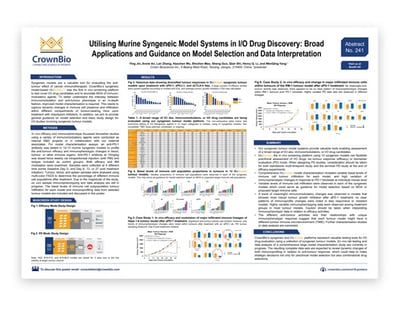- Services
- Therapeutic Areas
- Model Systems
- In Vitro
- In Vivo
- Technologies
- Service Type
- About Us
- Our Science
- Start Your Study Now
Ying Jin, Annie An, Lan Zhang, Haochen Wu, Binchen Mao, Sheng Guo, Qian Shi, Henry Q. Li and WenQing Yang
 Syngeneic models are a valuable tool for evaluating the anti-tumour effects of a variety of cancer immunotherapies. To optimise model use, and truly understand the interplay between immunomodulation and anti-tumour phenotype, in depth syngeneic characterisation is required.
Syngeneic models are a valuable tool for evaluating the anti-tumour effects of a variety of cancer immunotherapies. To optimise model use, and truly understand the interplay between immunomodulation and anti-tumour phenotype, in depth syngeneic characterisation is required.
We’ve characterised the syngeneic models used in our MuScreen™ in vivo screening platform. This immunoprofiling includes capturing the dynamic changes of immune cell presence and infiltration within different compartments of tumour-bearing mice, after treatment with checkpoint inhibitors.
The resulting datasets reveal changes in immune profile relative to anti-tumour response, and can help guide strategic decisions on preclinical model, as well as combinatorial drug selection.
Your privacy is important to us.
We'll never share your information.
© 2024 Crown Bioscience. All Rights Reserved.


© 2024 Crown Bioscience. All Rights Reserved. Privacy Policy
2023-02-19
2021-10-27
landing_page
PDX/Databases